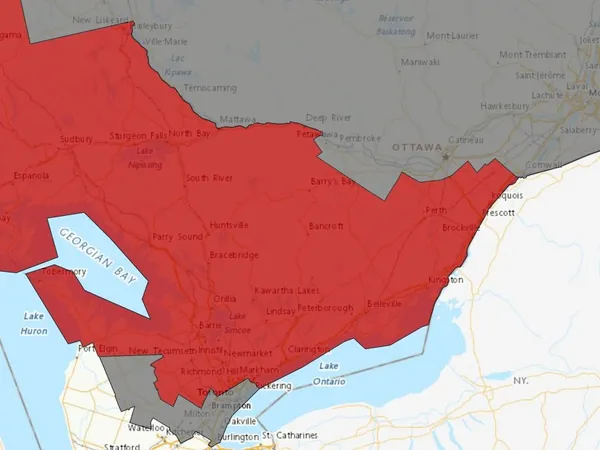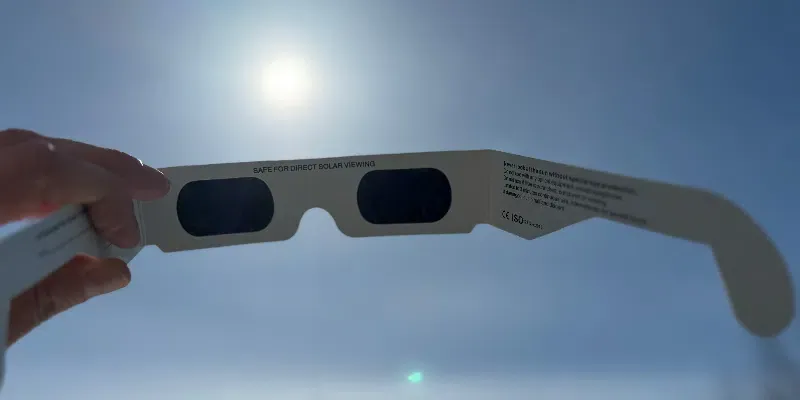
Unveiling Antarctica's Secret Landscape: A Breakthrough in Mapping Under Ice
2025-03-23
Author: Benjamin
In a groundbreaking revelation, scientists have lifted the veil on Antarctica's enigmatic hidden world beneath an astonishing 16,000 feet of ice. Researchers from the British Antarctic Survey (BAS) have introduced "Bedmap3," a detailed mapping project that provides an unprecedented glimpse into the continent's intricate subglacial topography.
For decades, the icy expanse of Antarctica has perplexed scientists eager to uncover its mysteries. The release of Bedmap3 marks a significant leap in understanding, compiling over six decades of survey data—including contributions from multiple institutions—into a comprehensive dataset that illustrates the continent's geography as if its massive 27 million cubic kilometers of ice were to melt away.
Bedmap3 stands out as the most detailed representation yet of Antarctica’s icy surface elevation and ice thickness. Utilizing an incredible 52 million data points rendered on a finely-tuned 500-meter grid, this project assimilates data from various sources, including satellites, aircraft, ships, and even dog-sled expeditions. The result? A cartographic marvel that fills critical gaps in our knowledge, particularly in the East Antarctica region around the South Pole and along the Antarctic Peninsula and Transantarctic Mountains.
Among the stunning discoveries revealed by the new map are deep valleys and towering mountains that remained hidden until now. This detailed visualization allows scientists to pinpoint vital lines where ice interacts with ocean waters, shedding light on the continent's geography like never before. Noteworthy findings include the extensive ice sheet covering approximately 13.63 million square kilometers, with an average thickness of 1,948 meters. The thickest ice was discovered in a previously unnamed canyon in Wilkes Land, reaching a staggering thickness of 4,757 meters.
Understanding the variables at play under that immense ice sheet is crucial. Bedmap3 provides scientists with essential data to examine the dynamics of ice movement and its relationship with ocean behavior, which is increasingly important in the context of climate change and rising sea levels. By introducing methods like radar, seismic reflection, and gravity measurements, researchers can now better forecast how Antarctica’s icy surface may respond to ongoing climate change and its implications for future sea-level scenarios.
As climate change continues to be a pressing concern for global populations, data from Bedmap3 will not only help in assessing the current state of Antarctica’s ice masses but also provide insights into the continent's geological history and its role in the broader ecosystem. This monumental mapping effort holds the key to unraveling the mysteries of one of Earth's final frontiers and understanding the critical intersections between ice, land, and ocean.
Stay tuned as scientists from BAS and collaborating institutions continue to decode the secrets held beneath the icy surface, potentially reshaping our understanding of Antarctica and its impact on the future of our planet.









 Brasil (PT)
Brasil (PT)
 Canada (EN)
Canada (EN)
 Chile (ES)
Chile (ES)
 Česko (CS)
Česko (CS)
 대한민국 (KO)
대한민국 (KO)
 España (ES)
España (ES)
 France (FR)
France (FR)
 Hong Kong (EN)
Hong Kong (EN)
 Italia (IT)
Italia (IT)
 日本 (JA)
日本 (JA)
 Magyarország (HU)
Magyarország (HU)
 Norge (NO)
Norge (NO)
 Polska (PL)
Polska (PL)
 Schweiz (DE)
Schweiz (DE)
 Singapore (EN)
Singapore (EN)
 Sverige (SV)
Sverige (SV)
 Suomi (FI)
Suomi (FI)
 Türkiye (TR)
Türkiye (TR)
 الإمارات العربية المتحدة (AR)
الإمارات العربية المتحدة (AR)